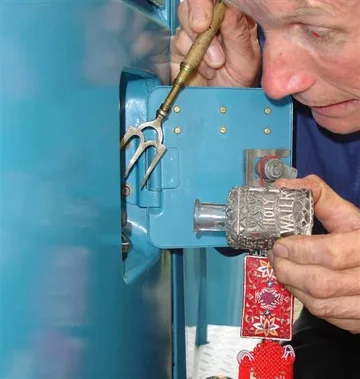- Thread starter
- #61
lostmarbles said:If your old one is like this one then I doubt you'll find any replacement seals available for it Mark: (The seal is far more sophisticated than just an O-ring, and I had to cut mine open with a hacksaw to even look inside.)
OEM fuel primer for 1979 BJ40:
The EPC now suggests to me (after studying it more closely than I did the first time) that you don't have a return line back to the tank at all.
I think the second line you see on your tank will be the one leading to your rusty SQUID. (I like that descriptive name too.)
Sounds to me like you may have nailed it then Mark (with your initial instincts being right on the ball)!
Vacuum in the tank is good IMO because it inhibits condensation from forming inside which in turn inhibits internal rust formation. I usually still have some vacuum left in my tank even after my vehicle has sat undriven for days on end.
However there must obviously be some mechanism for fresh air to enter and for all I know my cap plays its part with a vacuum-limiting feature too.
Exactly how are you testing your caps? (Maybe I can try testing mine?)

Ah heck, that sure looks like more than an o-ring indeed. There is still some vacuum in the tank for sure. But with the new cap, much much less.
Testing the new cap was easy, just suck on it!! There will be an initial resistance and then a air will start to flow. To test the old one, I would just get a large diameter pipe and fit it around the rubber gasket and suck on it. If there's no give, then ostensibly, there will be no way for air to get into the tank and you'll be starving your IP needlessly.
I know that in a Merc, there's a check valve that opens at a couple of millibars vacuum. This means that there's always some measure of vacuum in the tank.
Well I'll see what happens over the next couple of days once I install the new Bosch pump and napa gold fuel filter! Got quite a good deal at napa for that, about $10 only, with BCAA discount/







